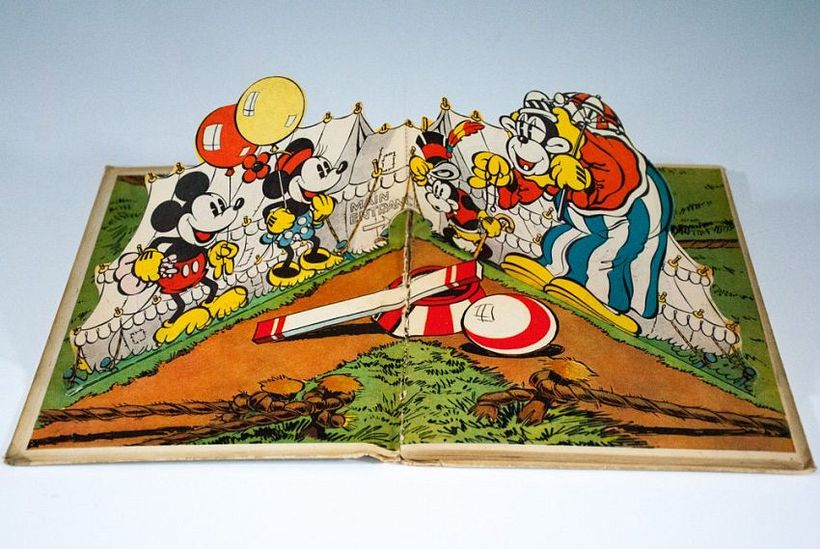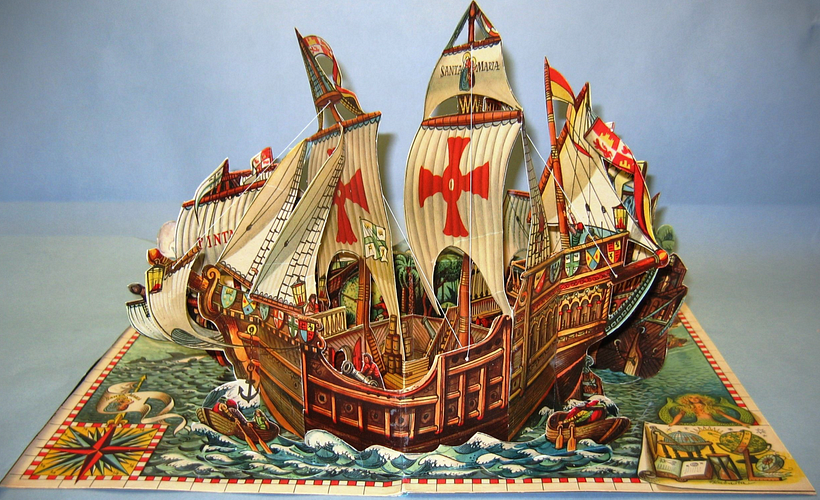Unfolding history: the fascinating world of Pop Up Books

Today we will dive into a fascinating journey through the unfolding pages that have captivated generations: movable books, also known as pop up books. Can you believe that this marvellous form of expression has its roots in the fascinating world of astronomy? From their humble beginnings in medieval times to the technological innovations of today, we will discover how these books have evolved, surprised and enchanted readers of all ages.
Join me on this journey through the history of movable books that have left their mark on a three-dimensional universe unfolding before our eyes!
A Magical Introduction to the World of Movable Books
Since time immemorial, movable books have been more than just printed pages. These three-dimensional treasures transport us to a world where words come to life, and images leap off the paper. Although they are popular today, their origins go back to medieval times, where Canon Lambert gave us "Liber Floridus", an encyclopaedia that unfolded semi-circular flaps to show planetary motion, giving us a glimpse of the magic that was yet to come.
The 18th century and the Revolution of Cultural Formats
The 18th century marked a turning point in the evolution of these books. Matthew Paris, with his concentric circles revealing Christian festivals in 1250, and the invention of the printing press in 1450, enabled the mass publication of books. It was at this time that Petrus Apianus, a German mathematician, astronomer and printer, created three-dimensional works of art such as "Astronomicum Caesareum" (1540), with moving discs detailing the position of Mars.
Another incredible work is the Astrolabe created by Leonhard Thuneysser in 1575.

The Evolution towards Children's Books in the SVIIIth century
SVIII brought with it the creation of movable books designed specifically for children. John Newbery, in 1744, became the pioneer in selling children's books, ushering in a new era. However, at the time, these books were primarily educational tools, not intended for amusement.
Meanwhile, publisher Robert Sayer, in 1765, introduced the "Harlequinades", loose-leaf folded sheets with interactive pictures, ushering in the era of interactivity in children's books. But the breakthrough came with the invention of lithography in 1798, which enabled mass production and stimulated the creativity of publishers, giving rise to tunnel and carousel books based on advances in animation and optical illusions.
The Golden Age of Moving Books in the 19th century
Later, the 19th century saw the culmination of movable books with ingenious die-cut figures, paper theatres and mechanisms to "animate" the images. Julian Wehr, a New Yorker with a passion for art and sculpture, created the first animated book in 1942, opening the door to a new era of creativity and originality in movable books.
The Birth of the Pop Up in the 1930s and 1940s
After the Golden Age, movable books faced hard times, but the end of the First World War marked a renaissance. S. Louis Giraud, working in the advertising department of a London newspaper, incorporated 3D models into his children's publications, giving birth to modern pop up books. In 1929, Giraud published the first issue with three-dimensional constructions, patenting the concept of "living models". In the 1930s, American publishers patented the term "pop up books", giving rise to a successful series of traditional fairy tales combined with Disney characters.

The Rise of Pop Up Books in Spain
In Spain, during the 1920s and 1930s, the publishing house Calleja revamped traditional formats with "Calleja-Cine", accordion fold-out stories, taking advantage of the rise of the cinematograph. In 1934, during the Second Republic, books with interior mechanisms were published by the Molino publishing house, which translated the term "pop up" as "surprise illustration". The 1940s saw the entry of new publishers and artists into the movable book market, with figures such as Maravilla, Gráficas Manén and Editorial Selva standing out.
Julian Wehr and the Animated Book Renaissance
This era saw the work of Julian Wehr, who created the first animated book in 1942 and produced a series of witty and original books based on classic stories during the 1940s and 1950s.
The Second Golden Age in the 1960s and 1970s
After World War II, the movable book industry experienced a decline, but in the late 1950s, innovative pop-up books re-emerged, marking the second Golden Age in the 1960s. Vojtech Kubasta, illustrator and graphic designer, created 120 creatively engineered pop-up books, mainly using "V-shaped" mechanisms, achieving stunning effects with simple but striking designs.

Waldo Hunt and the Modern Pop Up Industry in the 1960s and 1970s
In 1964, Waldo Hunt founded Graphics International in Los Angeles, creating the modern pop up industry as we know it today. His focus on technical development and production led to collaborations with authors, illustrators and the world's best paper engineers. The integration of grid mechanisms derived from the Japanese Kirigami marked a new era of spectacular engineering.
The 1980s and Beyond: Innovations and Recognition of Paper Engineers
Until 1970, engineering authorship was not included in book credits. It was in Hunt's The Dwindling Party in 1970 that Ib Penick, a Danish paper engineer, became known. The 1980s saw some excellent publications, with recognition for paper engineers such as Ron van der Meer, David Carter, Chuck Murphy and Robert Sabuda.
Today and the Bright Future of Pop Up Books
Today, we enjoy high-quality, mass-produced publications thanks to China's capacity, which has reduced production costs and expanded access to these books for a wider audience. Technology continues to influence these books, and the future promises technical innovations such as augmented reality and artificial intelligence.
This fascinating journey through time and fold-out pages reminds us of the wonder of movable books. Want to explore more? I invite you to dive into the Pop Up courses on Domestika, where you can discover the art of bringing pages to life and immerse yourself in the magic of pop up books.
Thank you for joining me on this exciting journey through the history of pop up books - see you next time!






0 comments